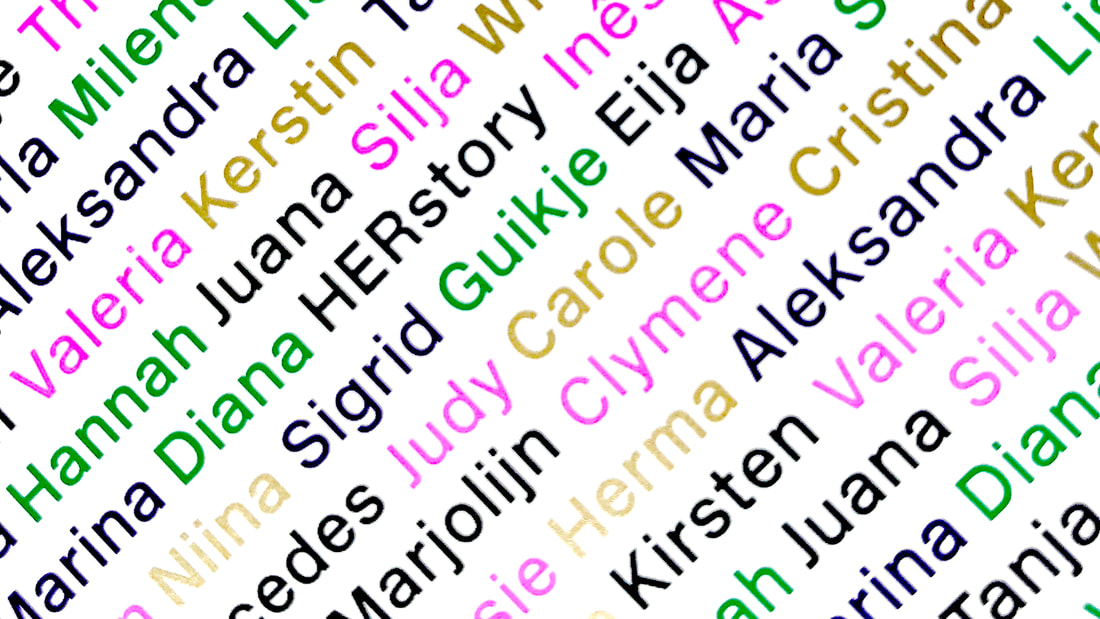A couple or so years ago longstanding friends and colleagues - Carla Delfos (NL), Mercedes Giovanizzo (ES) and Chrissie Tiller (UK) came together to discuss women, leadership, power and diversity - referencing contemporaneous discussions across Europe and beyond. They are experts in their field and at the helm of pan-European networks, programmes and projects.
These were perhaps the kind of conversations that many of us have been having. Yet they took it a step further pursuing the idea of a space to share, to think and ultimately, to influence: A European network of women cultural leaders.
In July 2018, D6 was invited to an inaugural meeting of HERstory at the Art Academy in Basel. The event which took place over three days, brought together producers, artists, filmmakers, academics, public sector officers, politicians and cultural managers operating across Europe. A total of 45 influential women, representing 15 countries.
What were these conversations reflecting?
Why in 2018 we should still be thinking about gender equality in the arts?
What more could be said and what needed to be done?
Immediately, we could identify that the issues are procedural and they are measurable:
Equal pay in the UK has been the law for more than 40 years, yet in our sector, women are on average still paid less per hour than their male colleagues. Up to 40% less in commercial galleries and auction houses and up to 14% in our public museums and galleries.
To this day, three of the oldest cultural institutions in Western world, the British Museum (est. 1753), the Louvre (est. 1793), and The Metropolitan Museum of Art (est. 1870) have never had female directors.
In the centre of Basel, the hallowed halls of the impressive Kunstmuseum has collections and changing exhibitions. Yet on the floor showing the works of Jasper John, Claes Oldenburg and Jackson Pollock, not a single female artist was represented. “Why have there been no great women artists?”the feminist art historian, Linda Nochlin famously asked in her landmark 1971 essay. Her point was of course that there had been, but centuries of misogyny in the art world meant a lack of visibility and presentation in museum collections and exhibition programmes.
This imbalance remains not only in collections in established and publicly funded institutions, but research compiled by the Guardianover the last decade reveals that male artists made up 88% of solo shows at Gagosian 76% at White Cube and 83% at the Lisson Gallery.
These are issues of parity and equality that can be measured. Perhaps quotas could be introduced, inequalities exposed and policies written. This is necessary.
But what of the culture that creates these conditions? What of religion, of class, of commerce and the instruments of nation states?
In a world dominated by a ‘growth is good’ agenda, we questioned where power lies and if these are the values that we want to live by. We asked about leadership and where the space is for those who do take the risk and achieve creative success, but are rarely rewarded with a prestigious job title or a large pay packet? Are the heads of institutions and ministries the leaders, or are these slow moving monoliths looking to others and those more likely to take a risk. Who is the leader here? Where does this leave the artist or organisation whose work connects at a slower or deeper level?
HERstory was an opportunity to explore what we could learn from one other. Our conversations were wide-ranging and cross-cutting from neo-liberalism to the economic crisis, from diversity to inclusion, from heritage to language.
As recent graduates, with a fighting spirit, D6’s (then ISIS Arts’) first exhibition in 1992 was for International Women’s Day. In 2018 things are measurably better, and across the world policies protect, support and promote the rights of women.
So why are these conversations still necessary?
They are necessary because inequality still exists and will continue to do so unless we create a fairer, kinder and more equal society. This is not just about the what, but also the how. From Serbia to Finland, we represented most of the countries of Europe, yet we did not represent the diversity of Europe. Is this just about women? The answer is certainly no.
So, what next for HERstory?
We will continue to have and share these conversations. Is it a movement, a network or a series of informal meetings? Perhaps it’s too early to say. Perhaps the structure is not what is important.
Clymene Christoforou,
Director, D6
July 2018


 RSS Feed
RSS Feed